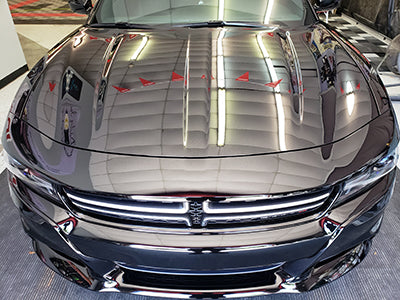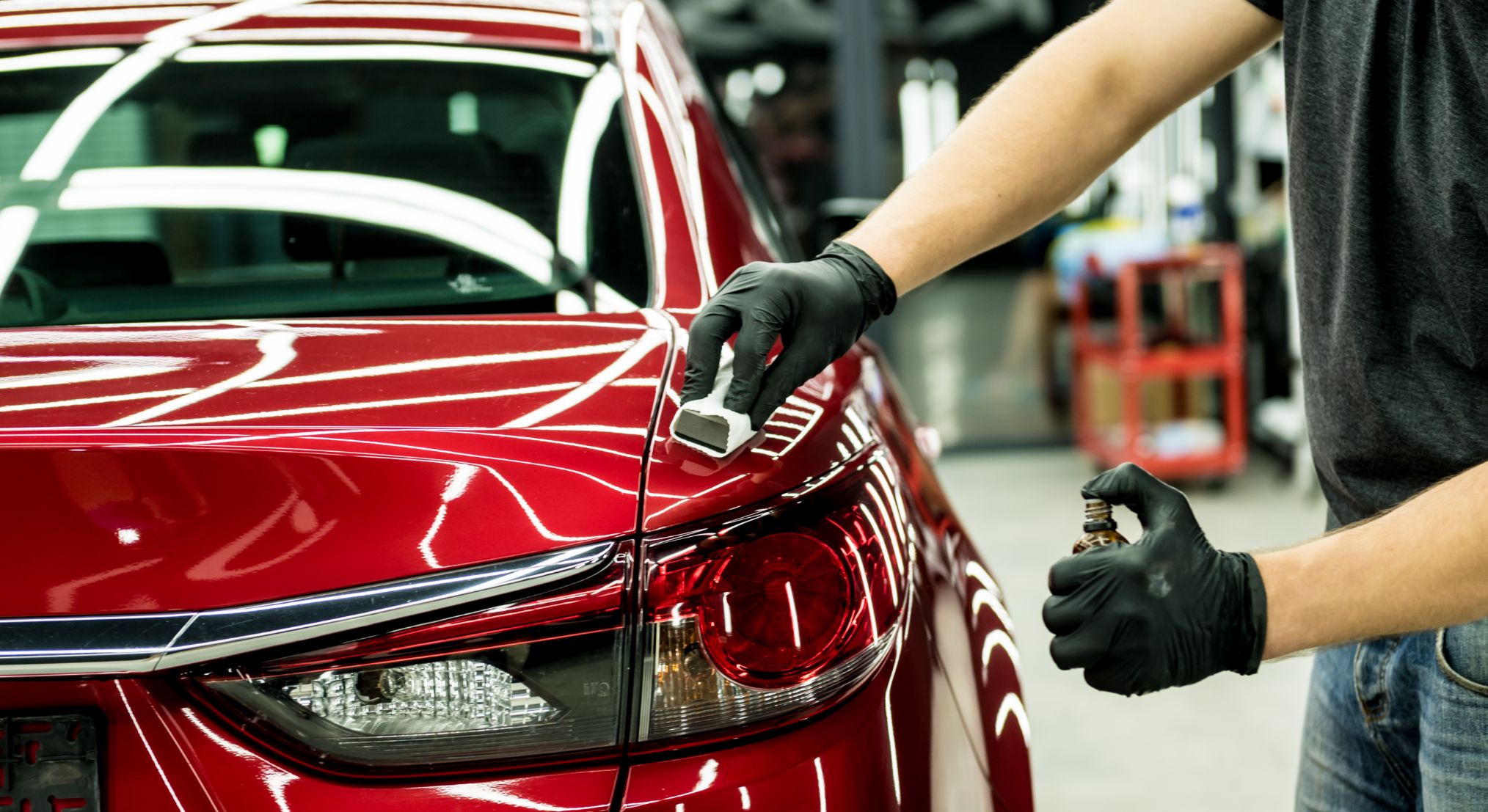Ceramic Coating: The Future of Automotive Surface Protection
Ceramic Coating: The Future of Automotive Surface Protection
Blog Article
Ceramic Covering vs. Standard Wax: Which Supplies Better Long-Term Protection?
The debate in between ceramic layers and typical wax for lorry protection has gathered significant interest amongst vehicle lovers and experts alike. Ceramic layers flaunt superior longevity and resistance to environmental variables, yet the intricacy of their application increases inquiries concerning ease of access and usefulness.
Introduction of Ceramic Finish
Ceramic covering has actually obtained considerable popularity among vehicle enthusiasts and detailers alike because of its innovative safety high qualities. This cutting-edge innovation is made to produce a sturdy, hydrophobic shield over a car's paint surface, considerably enhancing its resistance to ecological impurities such as dirt, UV rays, and chemical discolorations. Unlike standard wax, which provides a temporary layer of security, ceramic finishings bond at a molecular degree with the paint, using durable longevity-- usually extending past 2 years with appropriate upkeep.
The application process includes careful prep work of the lorry's surface area, including cleaning and polishing to ensure ideal adhesion. When applied, the finish treatments to create a durable layer that not just adds depth and gloss to the paint but additionally simplifies upkeep. With its hydrophobic homes, ceramic covering enables water and dirt to move off even more quickly, reducing the frequency of washes and reducing the risk of swirl marks.
Moreover, ceramic coverings are offered in numerous formulas, enabling customers to select products tailored to their particular requirements and choices. Overall, ceramic finishing represents a considerable innovation in paint protection innovation, providing superior efficiency compared to standard choices.
Overview of Conventional Wax
Typically concerned as a staple in automobile treatment, wax works as a prominent selection for those seeking a straightforward approach to boost and secure their car's paint - ceramic coating. Automotive wax generally consists of natural components, such as carnauba, or synthetic substances, made to produce a safety layer on the surface of the paint. This layer not just enhances the car's gloss and beam but likewise supplies a barrier against environmental impurities
The application of wax is usually user-friendly, making it accessible for both experts and DIY enthusiasts. When applied, wax requires a curing period, after which it sets to develop a protective covering.
Nonetheless, while wax works for improving the visual appeal of a lorry, it is essential to keep in mind that the protection it uses might require extra regular reapplication contrasted to alternative items, such as ceramic coatings. Generally, conventional wax stays a preferred alternative for those focusing on simplicity of use and prompt aesthetic improvement.
Sturdiness and Longevity Comparison
While both ceramic coverings and traditional wax deal safety benefits for automobile paint, their toughness and longevity vary considerably. Traditional wax, normally made from all-natural carnauba or artificial polymers, normally gives a protective layer that lasts approximately 3 to 6 months. This reasonably short life-span requires normal reapplication to preserve optimum security.
On the other hand, ceramic coatings are engineered from innovative nanotechnology, developing have a peek at these guys a covalent bond with the paint surface. This causes a durable, hydrophobic layer that can withstand for 2 to 5 years, depending on the product and ecological problems. The exceptional longevity of ceramic layers is credited to their chemical structure, which provides improved resistance to scrapes, UV rays, and oxidation.

Security Against Ecological Elements
Safeguarding a car's paint from environmental factors is essential for keeping its appearance and worth in time. Autos are continuously subjected to a selection of elements, including UV rays, bird droppings, tree sap, acid rainfall, and roadway grime, all of which can jeopardize the honesty of the paintwork.
Ceramic finishings supply a robust defense versus these ecological aggressors. Unlike standard wax, which can break down promptly under UV direct exposure, ceramic coverings develop a sturdy, hydrophobic layer that resists the damaging results of sunshine and environmental pollutants. This sophisticated innovation develops a chemical bond with the vehicle's surface, providing exceptional security that lasts for many years, also in rough problems.
In comparison, ceramic finishes preserve their protective qualities much longer, dramatically minimizing the danger of paint damage and guaranteeing that the car retains its aesthetic allure. As an outcome, ceramic finishes are progressively recognized as the exceptional option for long-term defense versus ecological variables.
Application and Upkeep Differences
The methods of application and succeeding maintenance for ceramic layers and standard wax differ considerably, impacting the general customer experience and effectiveness of each item. Ceramic coatings need a more complex application procedure, normally entailing surface prep work that consists of washing, sanitizing, and brightening the vehicle. When the surface area prepares, the ceramic finishing is used in a controlled environment, commonly requiring professional experience to ensure appropriate treating and bonding to the paint.

While both items enhance automobile appearance, the longer-lasting security offered by ceramic coverings may validate their first investment, despite the more demanding application process. Conversely, traditional wax remains a popular choice for those seeking a simpler, see albeit short-term, service.

Verdict
In conclusion, ceramic coverings show substantial benefits over standard wax in regards to toughness and ecological security. With a life expectancy prolonging two to five years and exceptional resistance to UV rays, dirt, and chemical stains, ceramic coatings offer a more effective remedy for lasting lorry upkeep. The application procedure might call for professional competence, the resulting cost savings and decreased frequency of reapplication underscore the value of ceramic coverings for those seeking optimum lorry defense.
The dispute in between ceramic layers and traditional wax for car protection has actually gathered substantial interest among automobile lovers and professionals alike. Unlike conventional wax, which gives a short-lived layer of protection, ceramic finishes bond at a molecular degree with the paint, providing resilient resilience-- typically extending beyond two years with appropriate upkeep.
While both ceramic finishings and typical wax offer safety advantages for automobile paint, their longevity and longevity differ significantly. For cars and truck enthusiasts seeking lasting protection, ceramic layers provide an engaging advantage over standard wax products.
In final thought, ceramic coatings demonstrate significant benefits over traditional wax in terms of toughness and ecological security.
Report this page